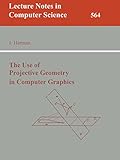The Use of Projective Geometry in Computer Graphics [electronic resource] / edited by Ivan Herman.
Material type: TextSeries: Lecture Notes in Computer Science ; 564Publisher: Berlin, Heidelberg : Springer Berlin Heidelberg, 1992Description: VIII, 151 p. online resourceContent type: text Media type: computer Carrier type: online resourceISBN: 9783540466871Subject(s): Computer science | Computer graphics | Computer science -- Mathematics | Geometry | Computer Science | Computer Graphics | Computational Mathematics and Numerical Analysis | GeometryAdditional physical formats: Printed edition:: No titleDDC classification: 006.6 LOC classification: T385Online resources: Click here to access online
TextSeries: Lecture Notes in Computer Science ; 564Publisher: Berlin, Heidelberg : Springer Berlin Heidelberg, 1992Description: VIII, 151 p. online resourceContent type: text Media type: computer Carrier type: online resourceISBN: 9783540466871Subject(s): Computer science | Computer graphics | Computer science -- Mathematics | Geometry | Computer Science | Computer Graphics | Computational Mathematics and Numerical Analysis | GeometryAdditional physical formats: Printed edition:: No titleDDC classification: 006.6 LOC classification: T385Online resources: Click here to access online  E-BOOKS
E-BOOKS
| Current library | Home library | Call number | Materials specified | URL | Status | Date due | Barcode |
|---|---|---|---|---|---|---|---|
| IMSc Library | IMSc Library | Link to resource | Available | EBK5864 |
Projective geometry in general -- Practical use of four dimensional geometry -- Modelling clip -- Projective algorithms -- Conclusions -- Directions for further research -- An unsolved problem: Shaded B-spline surfaces.
The ultimate goal of all 3D graphics systems is to render 3D objects on a two-dimensional surface such as plotter output or a workstation screen. The approach adopted by most graphics systems is to perform a central or parallel projection of the objects onto the view surface. These systems have to make use of the mathematical results of projective geometry. This monograph has as its aim the derivation of a framework for analyzing the behavior of projective transformations in graphics systems. It is shown that a mathematically precise description of the projective geometrical nature of a graphics system leads not only to a deeper understanding of the system but also to new approaches which result in faster or more precise algorithms. A further aim of the book is to show the importance of advanced mathematics for computer science. Many problems become easier to describe or to solve when the appropriate mathematical tools are used. The author demonstrates that projective geometry has a major role to play in computer graphics.


There are no comments on this title.